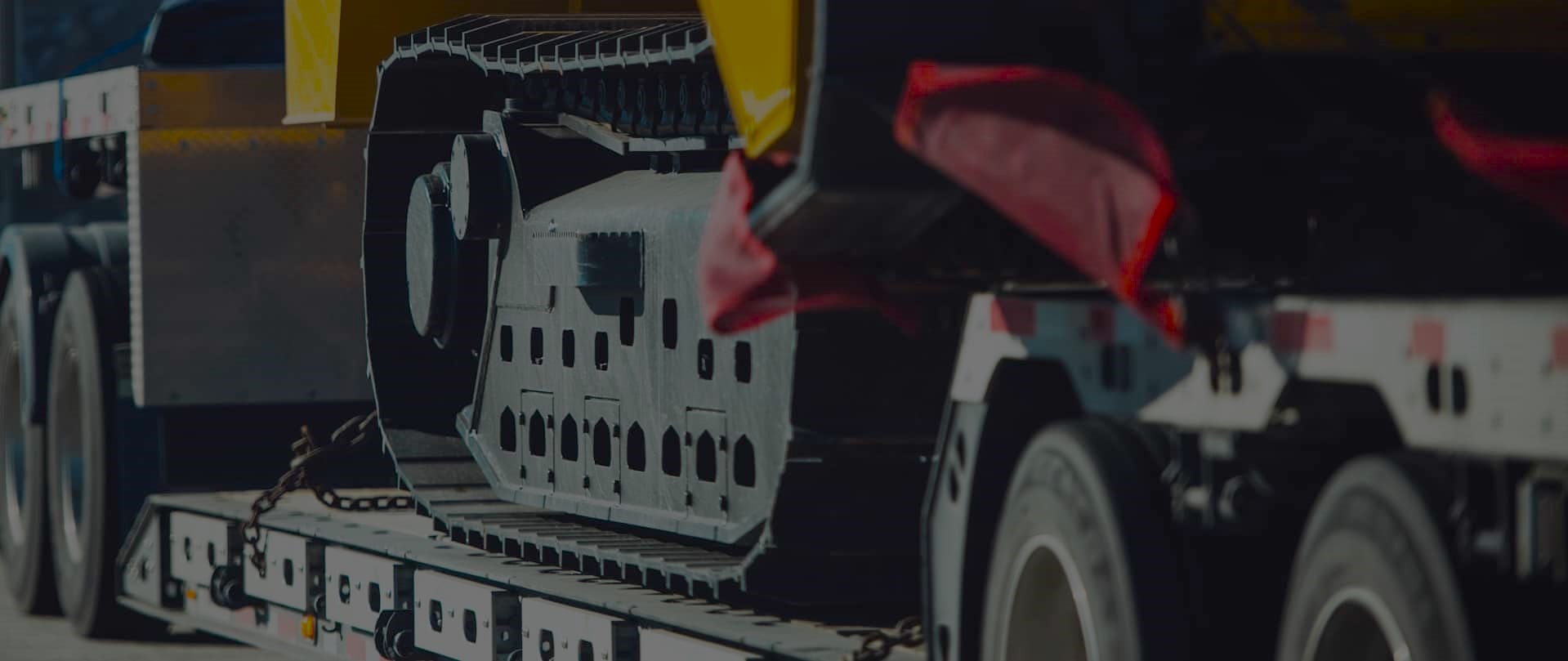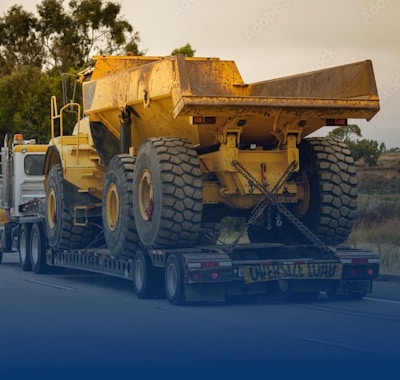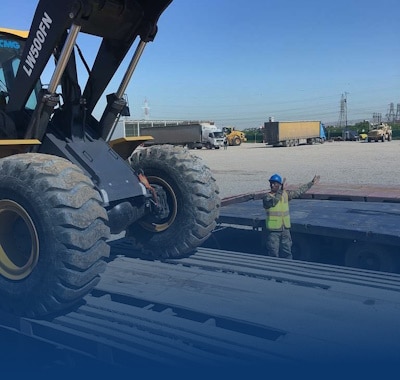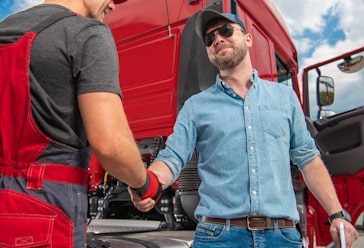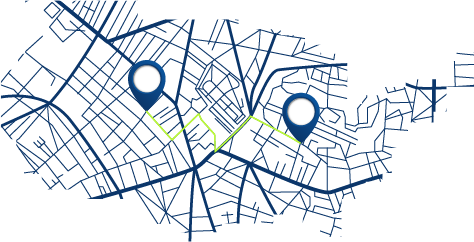Oilfield Equipment Oversize Permits in Texas: What You Need to Know
Freedom Heavy Haul can offer expedited Pickup and Delivery for any size shipment anywhere in the USA. Contact us today for No Hassle, No Pressure Pricing.
Navigating Texas oversize permits for oilfield equipment can feel complex at first. This guide starts with clear, practical info so shippers know what to expect when moving heavy equipment in the state.
We outline which permits and regulations apply today, what measurements and details matter, and the single step-by-step process that keeps your transport compliant. Knowing how width, height, overhang, axle limits, and load designations affect your route saves time and prevents costly rework.
Freedom Heavy Haul earns praise for personal attention, fast callbacks, and reliable delivery from clients like Bilbo Baggins, Tim Allen, John Armstrong, and Elizabeth Martin. When timing is tight, responsive services and a clear plan protect drivers, gear, and the public.
This article previews who needs permits, exact limits, escort rules, route planning, safety basics, pricing, and the process to get approvals before crews stage. Reach out early so you can lock in routes, schedule, and approvals and keep your load on time.
Who Needs Oversize Permits for Oilfield Equipment in Texas
Many moves look straightforward until the final measurements are taken. Top drives, rig masts, mud pumps, shale shakers, frac tanks, generators, and skidded buildings often trigger requirements when the assembled profile exceeds base limits.
Common triggers include width over 8 ft 6 in, height above 14 ft, or front/rear overhang beyond 2 ft/4 ft. Even standard trailers carrying pipe bundles, BOP stacks, or compressors can tip over those numbers after blocking and tarps are added.
Risks when a load lacks authorization
- Citations, on-the-spot fines, and possible vehicle impoundment for the driver.
- Work stoppages, reroutes, and roadside re-measurements that delay crews and raise costs.
- Carrier liability and insurance exposure if a noncompliant move causes damage or an incident.
| Typical Load | Common Exceedance | Likely Penalty | Recommended Action |
|---|---|---|---|
| Frac tank | Width or height | Fines & delay | Measure assembled profile; request approval |
| BOP stack on trailer | Overhang or height | Citation, impound risk | Consider split transport or escort |
| Generator with cradle | Extra width from securement | Route denial | Re-block at yard and confirm documentation |
Work with experienced services early. A coordinator can verify whether you need proper permits, give driver instructions, and note route constraints so loads move safely and on schedule.
Texas Size and Weight Limits That Define an Oversize Load
Clear size and weight rules decide if a load needs special handling before it moves.
Base limits without a permit set the threshold: height 14 feet, width 8 feet 6 inches, front overhang 2 feet, rear overhang 4 feet. Any load beyond those numbers is treated as oversize.
Routine specifications that many moves fit
Typical routine specs allow axle group weight caps (single 25,000 lb; tandem 46,000 lb; tridem 60,000 lb; quad 70,000 lb). Length can go to 125 feet and overhang up to 30 feet.
Width allowances vary: up to 20 feet on most roads, but limited to 16 feet on interstates. That difference often affects route choice and timing.
| Category | Routine Limit | Notes |
|---|---|---|
| Height | 14 ft (base) | Accurate height data avoids bridge strikes and detours |
| Width | 8 ft 6 in base; up to 20 ft routine | 16 ft max on interstates; impacts escorts and lane use |
| Axle weight | Single 25,000; Tandem 46,000; Tridem 60,000; Quad 70,000 lb | Distribution matters as much as gross weight |
When a load becomes a super load
If any routine specification is exceeded, the move is classed as a super load. That triggers engineering review, extra lead time, and stricter regulations.
Measure the loaded configuration — cribs, bolsters, and tarps — not just the bare unit. Tall derrick sections and wide skid packages often push height or width limits; careful blocking and securement can keep many loads within routine specs and speed approvals.
Navigating Texas oversize permits for oilfield equipment
Before you move heavy gear, match measured dimensions and axle weights to the right permit class.
Permit types and which one fits your equipment and routes
Routine oversize covers many loads within statewide limits (width up to 20 ft, 16 ft on interstates; length to 125 ft; overhang to 30 ft).
Super load applies when any routine limit is exceeded and needs engineering review and extra lead time.
Documents, specifications, and measurements you must also provide
Submit overall width, height, length, front/rear overhangs, axle spacings and axle group weights, origin and destination, and preferred routes.
Include photos or drawings showing securement, cribs, and tarps so reviewers see the loaded profile.
How permit rules affect bridge clearances, axle weights, and route approvals
Accurate height and axle data protect bridges and pavement. Overstated or missing specs can force denials or long detours.
Escort rules change by thresholds: one escort usually covers widths over 14 ft, 17 ft height, or very long lengths; two escort vehicles may be required for wider or taller loads.
- Measure with all securement in place.
- Confirm local corridor limits; some routes are stricter than statewide rules.
- Follow a clear process: gather specs, submit application, respond to revisions, get the permit, then dispatch.
Plan early to align load configuration with regulations and avoid fines, extra vehicles, or last-minute route changes.
Escort Vehicles for Wide and Long Loads: When One Escort or Two Are Required
Escort vehicles play a key role in keeping wide and long loads safe on busy highways and narrow rural roads.
One escort vehicle is typically required when a load exceeds any of these thresholds:
- Width over 14 feet
- Height over 17 feet
- Length over 110 feet
- Overhang of 20 feet
Two escort vehicles are generally needed when a load goes beyond higher limits:
- Width over 16 feet
- Height over 18 feet
- Length over 125 feet
- Overhang of 30 feet
| Escort Count | Common Thresholds | Why |
|---|---|---|
| One escort | 14 ft width · 17 ft height · 110 ft length | Manage immediate hazards and traffic |
| Two escorts | 16 ft width · 18 ft height · 125 ft length | Coordinate complex maneuvers and long escorts |
| Both | Overhang limits: 20 ft / 30 ft | Protect the public and carrier compliance |
Pilot cars use high-visibility signs, flags, strobe lighting, and height poles when needed. They stay in constant radio contact with the driver and advise on lane position, low wires, and merge conflicts.
Escort teams help at tight turns, rural approaches to well pads, and busy interchanges. They monitor traffic patterns ahead, reposition at stop-controlled intersections, and warn of work zones that affect timing.
Plan ahead: book escorts to match permit windows and driver schedules. Verify pilot car credentials, insurance, and route familiarity. Document a short pre-trip briefing so everyone knows signals, pull-over rules, and emergency steps—this reduces risk and protects compliance during large transport moves.
Route Planning and Scheduling for Heavy Haul Texas Transport
Good route planning starts with mapping clearances and load geometry against current bridge data.
Evaluate routes by checking width, height, and known bridge limits. Confirm axle group weight caps (single 25,000 lb; tandem 46,000 lb; tridem 60,000 lb; quad 70,000 lb) and compare them to your actual weight distribution. Use recent state DOT maps and construction feeds to avoid low spans or temporary lane closures.
Evaluate critical constraints
Pick routes that accept the full load profile and overhang. Note that interstate corridors reduce maximum width to 16 feet; this can change lane choices and escort needs. Inspect access roads for tight turns, shoulder strength, and surface condition before departure.
Time-of-day rules and keeping on schedule
Build a schedule that respects local time restrictions and curfews. Plan weigh-station stops and checkpoints to avoid peak enforcement hours. Have alternate paths ready for low bridges or chokepoints so the convoy adapts without major delays.
- Verify axle distribution after loading to match selected routes.
- Keep real-time communication with drivers and escorts to handle small changes quickly.
- Run a short pre-trip meeting to review rules, contingency steps, and the schedule.
Capture lessons after delivery to refine future planning and improve on-time performance when moving heavy loads.
Safety, Compliance, and Avoiding Fines on Oversized Load Moves
Safety begins before the truck moves: visible gear and clear checks stop most roadside problems. Follow state regulations and keep crews aligned to reduce risks, fines, and downtime.
Required signage, flags, and lighting
Visibility gear must include “Oversize Load” signs, red or orange flags on corners and overhangs, and required lighting. Escort vehicles use high-visibility markings, strobes, and height poles when needed.
Driver readiness and rules of the road
Drivers must do securement checks, tire and brake inspections, and radio tests with the escort. Review the permit to confirm dimensions, route, and time windows before departure.
Maintain lane discipline, controlled speeds, and coordinated maneuvers with escort vehicles to protect traffic flow and the load.
Enforcement checkpoints and avoiding fines
Weigh stations and road checks verify width and height in feet and inches and axle group weight. Common causes of fines include missing signage, deviating from the route, running outside allowed hours, or exceeding documented limits.
Carry printed and digital permit copies plus proof of escort arrangements to speed inspections. If weather or a detour creates a hazard, contact authorities to amend the permit or pause movement.
- Do a pre-trip safety briefing; repeat a short post-trip review.
- Keep situational awareness at merges, construction, and rural intersections.
- Invest in compliance early to prevent costly citations and reputational harm.
| Issue | What Inspectors Check | Likely Fine or Action | Quick Remedy |
|---|---|---|---|
| Missing signs/flags | Visibility gear on tractor, trailer, escorts | Citation; possible delay | Install proper signs/flags; re-inspect before moving |
| Route deviation | GPS vs. permitted route; lane/bridge limits | Fines; permit revocation | Return to approved path or obtain amendment |
| Weight/height over limit | Feet/inches measurements; axle group weights | Load stopped; overweight citation | Re-distribute load or secure engineering review |
| Operating outside time windows | Departure/arrival times on permit | Fines; enforcement stop | Reschedule movement or request time change |
The Permit Process: Steps We Handle Every Step of the Way
Our team starts each job by taking precise measurements and turning them into a clear, actionable permit submission. We focus on accuracy so your convoy avoids delays and fines.
From specifications and measurements to submission and approvals
Step 1: We document width, height, length, overhangs, and axle group weights. These specifications form the core of each application.
Step 2: A complete application is prepared to match the loaded condition. That reduces revision requests and speeds approvals.
Coordinating permits, escorts, and route changes in real time
We align permits, escorts, and route choices so what’s on paper matches what rolls. Our team handles live updates if traffic, construction, or weather forces a change.
- Fast callbacks and proactive status updates keep your crew in sync at every step.
- We verify special conditions on the permit and translate details into concise driver instructions.
- Contingency steps include re-measure, resubmit, and safe alternate routing to protect transport and safety.
“Freedom Heavy Haul gave immediate callbacks and kept our move on schedule.”
| Stage | What We Do | Outcome |
|---|---|---|
| Measurement | Record full loaded profile and axle weights | Accurate application details |
| Application | Prepare and submit matching documentation | Fewer revisions; faster approval |
| Coordination | Book escorts and confirm route windows | Alignment between permit and field plan |
| Live Support | Manage route changes and resubmissions | Reduced delays; compliant transport |
Pricing and Lead Times: What Impacts the Price of Your Oversize Permit and Haul
When moving large gear, small changes in height or axle spacing can change the quote and lead time drastically.
How dimensions, weight, axle count, and route complexity affect cost
Price rises as dimensions and gross weight increase. Wider or taller profiles trigger extra reviews and more required escorts.
Axle count and spacing matter because they decide if a move stays in routine review or becomes a super load. Super load reviews add engineering time and increase the overall price and time to approval.
Route complexity – urban corridors, low bridge clearances, and tight turns – adds coordination and possible fees. More escorts, pilot cars, and agency coordination push the haul cost up.
Tips to reduce delays and keep costs under control
Plan loading to trim height or width when possible. Confirm axle distribution before submission to avoid rework.
Submit complete, accurate details and photos the first time. That reduces back-and-forth and keeps your schedule on track.
Choose routes that avoid restrictive bridges and minimize the need for two escorts. Early engagement lets a coordinator flag bridge or corridor issues and propose smart alternatives.
| Driver | Impact | Quick Fix |
|---|---|---|
| Large dimensions | Higher price · longer approval time | Reduce height/width; re-block load |
| Axle/weight | Super load review possible | Redistribute to meet axle caps |
| Route complexity | More escorts · added coordination fees | Pick simpler routes; confirm clearances |
Avoid fines by following permit conditions and documented times. Last-minute changes often add days and extra cost. A responsive coordinator balances price, time, and risk so your transport stays on schedule and within budget.
Why Partner with an Experienced Heavy Haul Team for Oilfield Equipment
A reliable heavy haul partner turns complex moves into clear, manageable steps so crews meet deadlines and avoid surprises.
Personal attention, fast callbacks, and straight story service
Personal attention matters when timelines shrink. A single point of contact gives quick answers and clear instructions to drivers and escorts.
Fast callbacks keep your crew informed about start times, route tweaks, and any required vehicle checks. This level of communication cuts downtime and builds trust.
Proven experience with Texas permits, regulations, and escorts
Seasoned teams know state agencies and local rules. That experience speeds approvals, smooths planning, and reduces surprises on busy corridors.
Choose a provider that bundles services: permit acquisition, route planning, and escort coordination under one roof. That integration improves safety and lowers risk.
| Advantage | What We Do | Benefit |
|---|---|---|
| Experience | Handle paperwork and agency calls | Faster approvals; fewer reworks |
| Communication | Quick callbacks and driver briefs | Less delay; clearer expectations |
| Safety | Coordinate drivers, escorts, vehicles | Lower incident risk on route |
“Freedom Heavy Haul gave immediate callbacks and kept our move on schedule.”
Ready to Move Your Oversized Oilfield Equipment in Texas? Get a Free Quote Today
Request a free quote now and let our heavy haul team pair quick responses with proven haul experience to protect your schedule.
We coordinate permits, escorts, and the route plan every step so your field crews can focus on operations. Our staff must also verify measurements to the last feet and inches to match the permit to the actual load.
Strong, clear communication and fast callbacks keep your timeline and budget on track. We arrange any required escort vehicles and vehicle support, confirm route limits, and reduce the risk of fines before your driver hits the road.
Send specs and destination details today to get a tailored quote and a straight answer on timing, cost, and safe delivery.
